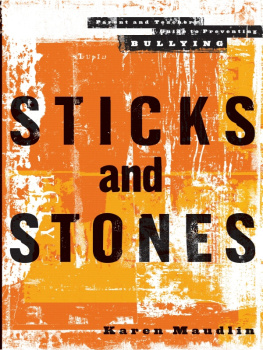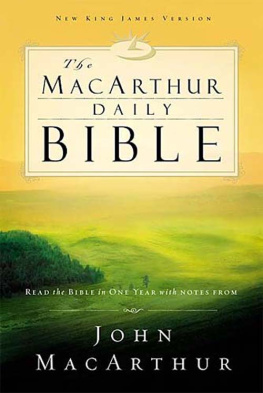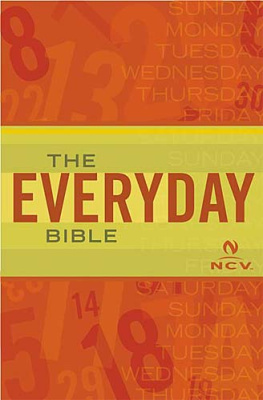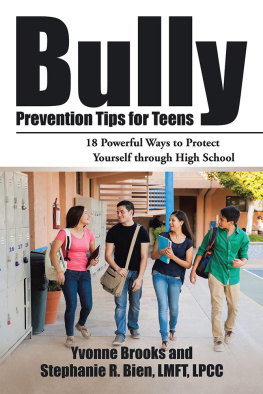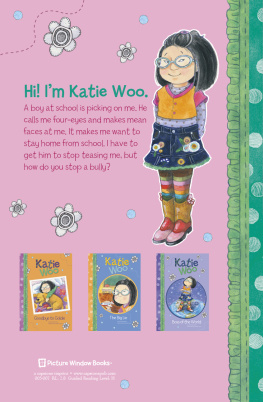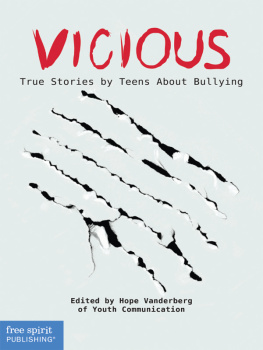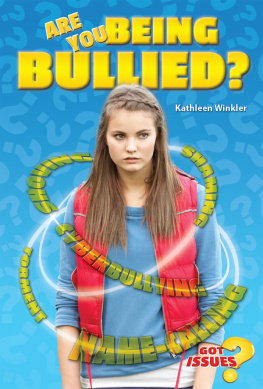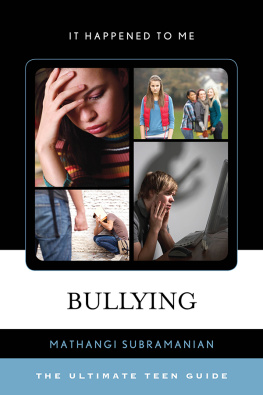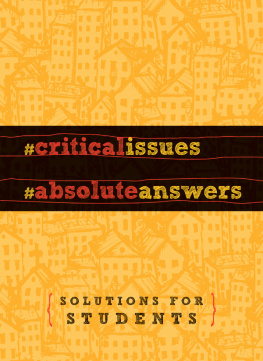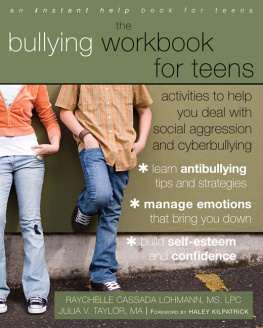
Sticks and Stones
Sticks and
Stones
KAREN L. MAUDLIN, PSY.D.

STICKS AND STONES
by Karen L. Maudlin
Copyright 2002 Karen L. Maudlin.
Published by The W Publishing Group, a Division of Thomas Nelson, Inc.,
P.O. Box 141000, Nashville, Tennessee 37214.
All rights reserved. No portion of this book may be reproduced, stored in a retrieval system, or transmitted in any form or by any meanselectronic, mechanical, photocopy, recording, or any other, except for brief quotations in printed reviews, without the prior permission of the publisher.
Quotations taken from the New Revised Standard Version Bible (NRSV). Copyright 1989 Division of Christian Education of the National Council of the Churches of Christ in the United States of America. Used by permission. All rights reserved.
Produced with the assistance of The Livingstone Corporation. Editorial work by Joan Guest and Paige Drygas; additional concept help and stories from April Carlson.
ISBN 0-8499-4356-6
Printed in the United States of America
02 03 04 05 06 07 PHX 9 8 7 6 5 4 3 2 1
Dedication
For Katie and Alexa, my most precious gifts from God.
Thank you for continuing to teach me that respect is a two-way street that needs to be traveled on a daily basis.
For Ben and Anne Grimshaw, my grandparents, who make my world a safer place.
Contents
CHAPTER 1
What Is Bullying?
CHAPTER 2
Who Are the Bullies?
CHAPTER 3
Victims and Bystanders
CHAPTER 4
What Kids Can Do
CHAPTER 5
What Parents Can Do
CHAPTER 6
What Schools Can Do
CHAPTER 7
School Intervention and Prevention Programs
APPENDIX A
Resources for Schools and Parents
APPENDIX B
Myths and Facts About Bullying
APPENDIX C
Characteristics of Youth Who Have Caused School-
Associated Violent Deaths
APPENDIX D
Things Children Should Know to Protect Themselves
APPENDIX E
16 Sure Signs of Strong Self-Esteem
Acknowledgments
I want to thank my family for their love, encouragement, and patience (did I mention patience?) during this project. For my girls, thank you for the maturity of understanding the time and energy away and your ability to understand that almost done really does precede done. I want to thank my sister, Nancy, for her steadfast encouragement in my life. You have always urged me to follow my dreams and to stand up for myself. Your guidance as an older sister helped me learn how to deal with bullies early in life.
It is hard to describe all my appreciation for the fine editorial hand of the best editor I know, my husband Mickey. I am grateful for your tireless wee morning hours of editing, refining, and shaping this book.
Thanks to my editors at The Livingstone Corporation, Paige Drygas and Joan Guest, for their contribution to the project. It was Livingstones vision for this book that made it happen.
I want to thank all the school administrators for sharing so freely your wealth of knowledge and experience. I admire your passion to educate kids both in their minds and in their character. I appreciate all the parents for sharing your stories from the school of hard knocks in dealing with bullying in your childrens lives.
I especially want to thank all the children and adolescents who shared their painful stories and their courageous lessons in order to help other kids and adults learn and grow in their respectfulness toward others.
Chapter One
What Is Bullying?
Character is a diamond that scratches every other stone.
CYRUS A. BARTON
H AMADS FAMILY moved to North America after living amid violence in the Middle East. Hamads father was happy with the life they had found. We came thousands of miles... away from war... to a country that is safe and peaceful. But Hamad, a fourteen-year-old high school student, was not happy. What he didnt tell his parents or younger brother was that school had become horrible, horrible. Kids called him namesgay, queer, fag. One student punched him in the stomach. In March 2000, Hamad wrote, I tried to cope with it but I couldnt take it anymore. After leaving a seven-page letter to his parents absolving them of guilt, he took a walk. He filled his backpack with rocks, made his way to the bridge between New Westminster and Surrey, B.C., and jumped to his death. His parents most haunting thought is that he never told them of his troubles.
Hamad was a victim of bullying. While suicide is an extreme response to bullying, the wounds from verbal and physical harassment run deep. Carol, a college junior, can remember vividly the day in fifth grade when a group of boys started to call her Shamu, after the killer whale at Sea World. For many children, bullying is their first encounter with evil. They come face to face with forces that are not just neutral toward them but are actively malicious. Thus bullying can have a profound, life-shaping effect on its victims.
According to a recent study published in the Journal of the American Medical Association, nearly 30 percent of children report being involved in bullying, either as a bully or as a victim, in the past year10 percent as victims, 13 percent as bullies, and 6 percent as both bully and victim. A staggering 8 percent said they were bullied at least once weekly. The report also confirmed what many other studies have found: Bullying is most common in the middle school, or junior high, years and decreases as kids enter the later teenage years.
While 30 percent of kids report being involved with bullying in the last year, when researchers asked how many have ever been involved with bullying, either as a bully or as a victim or both, the percentage rises dramatically. One study of students from the Midwest found that over the course of their middle and high school careers, 76.8 percent of students...say they have been bullied and 14 percent of those students indicated that they experienced severe reactions to the abuse. Because so many kids are affected, parents, teachers, administrators, and youth workers need to be alert. (See Appendix B for myths and facts.)
Yet there is a strange silence about a problem that affects so many families. Few schools actively work to educate parents and students about bullying. And for parents, bullying is an easy problem to want to minimize or write off as boys being boys or girls being catty. Often we simply do not face and confront the problem.
Our culture tends to inoculate us against the impact of small violent and disrespectful actions, treating them as rites of passage for our children. But another statistic reveals the lie behind that attitude. One study found that 60 percent of those characterized as bullies in grades 6-9 had at least one criminal conviction by age 24. In fact, research shows that school bullies become adult bullies, using their primitive tactics to get their way in adult life. In other words, if students and schools dont intervene to show bullies that their behavior is unacceptable, society will have to teach them a much harder lesson later in life, probably after many more people have been victimized.
THE DENIAL FACTOR
The reason we underplay the problem is that the issue of child safety makes us as parents uneasy. We are uncomfortable with the thought that our children will confront evil without our protection. So it is hard to face problems that we know are complicated or that we feel we have no control over.
Next page
